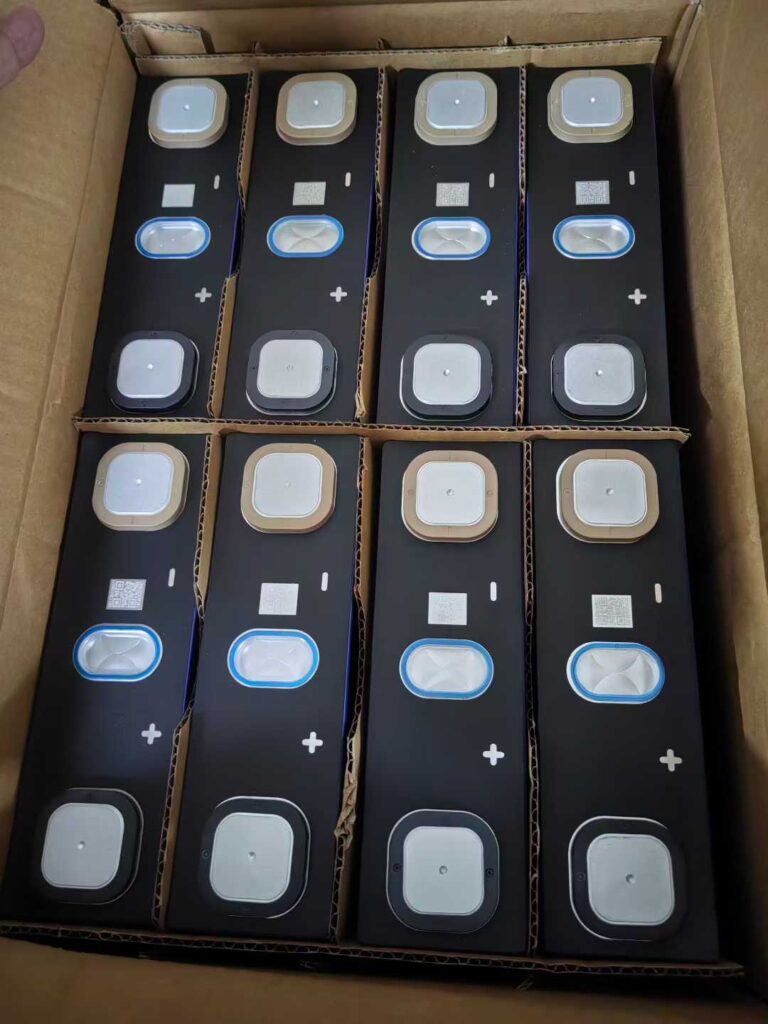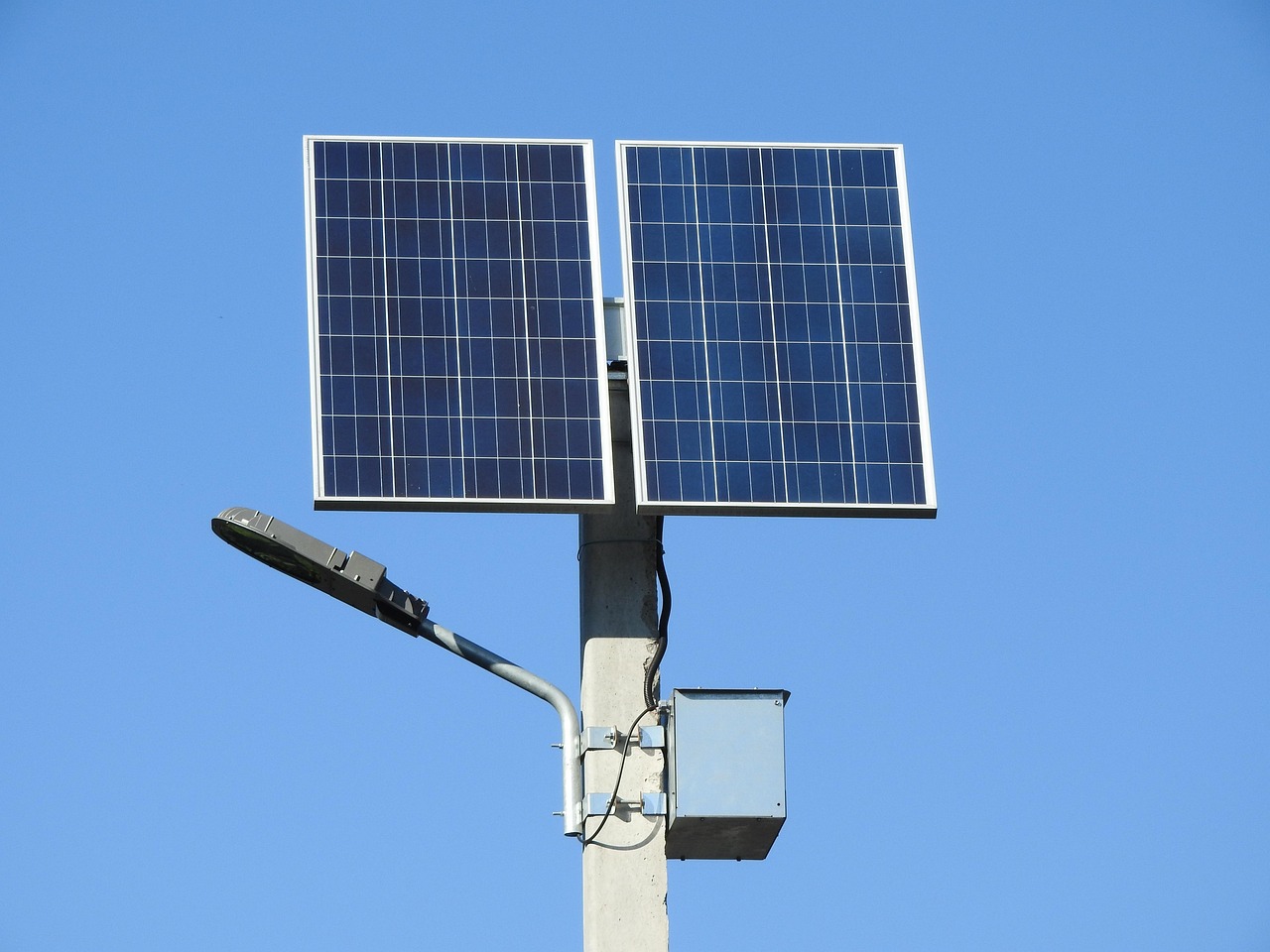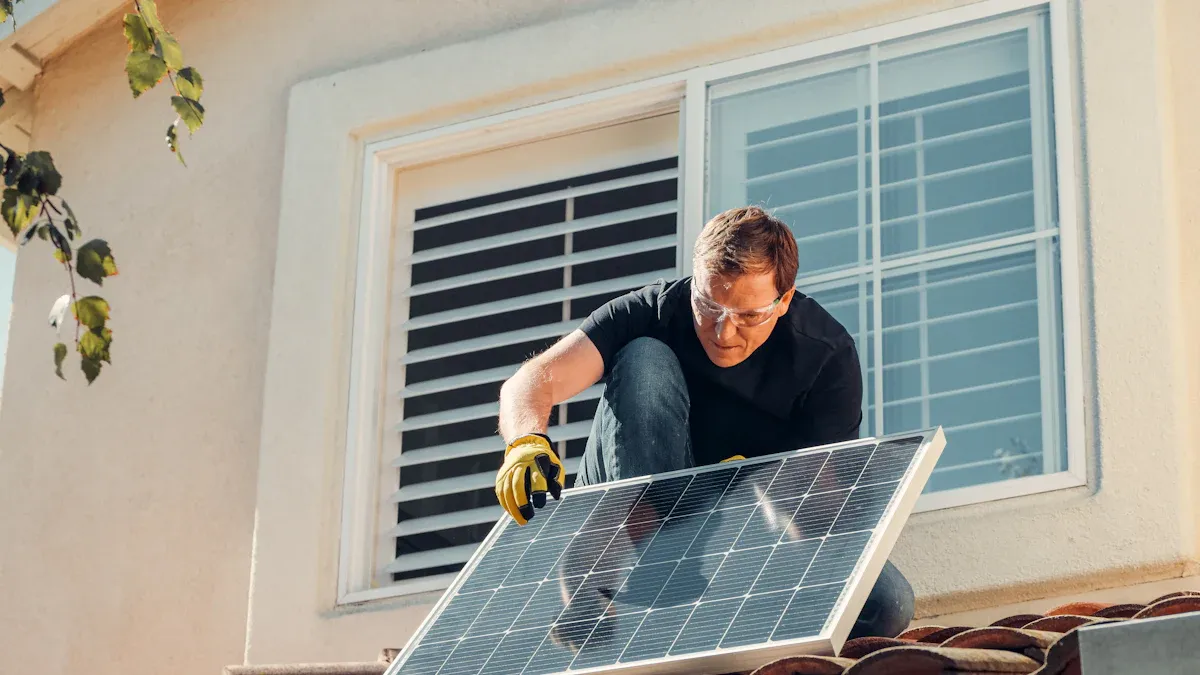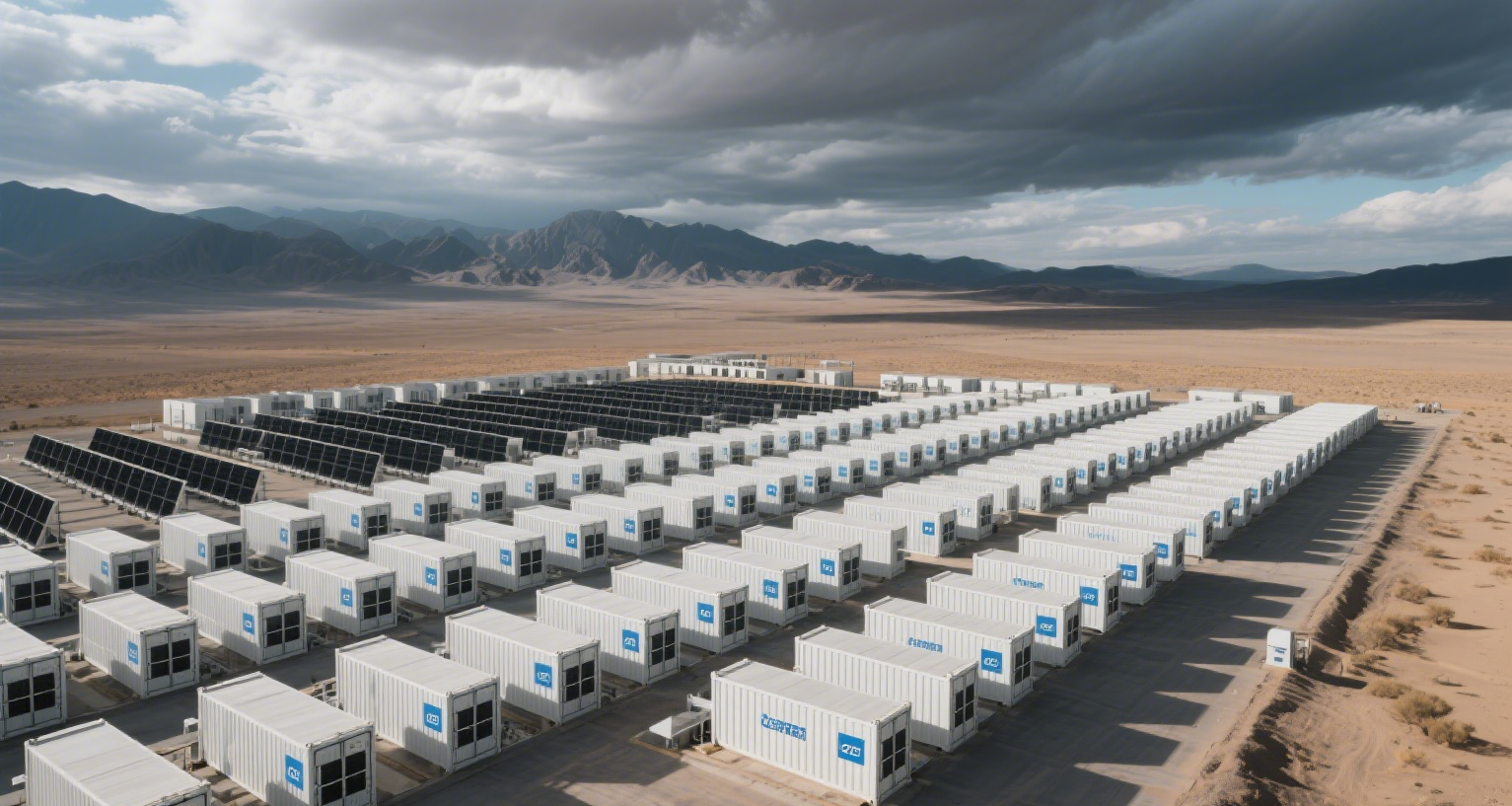
You face important choices when selecting energy storage systems. You need to weigh technology attributes, performance, operational life, safety, and economic considerations. The table below shows the most common factors influencing selection:
Factor | Description |
|---|---|
Technology Attributes | Safety, lifespan, deployment time, maturity, lifecycle costs, environment |
Performance | Efficiency, response time, ramp rate |
Operational Life | Duration before performance drops |
Safety | Fire and chemical risks vary by technology |
Economic Considerations | Financial impact and value |
Consider your specific goals and requirements. You will find clear, practical steps in the following sections.
Key Takeaways
Assess your energy needs carefully. Understand daily consumption and peak demand to select the right storage capacity.
Consider total ownership costs, not just upfront prices. Evaluate long-term value and payback periods to maximise your investment.
Prioritise safety and reliability. Choose systems with proven performance metrics and ensure proper installation to reduce risks.
Explore available incentives. Research local rebates and financial support to lower installation costs and improve returns.
Monitor system performance regularly. Use smart tools to track health and efficiency, ensuring optimal operation and longevity.
Key Factors for Energy Storage Systems
Matching System to Needs
You must select energy storage systems that align with your specific requirements. The right choice depends on your usage profile, available space, and future growth plans. You should assess your daily energy consumption, peak demand, and backup needs. The following table outlines the main criteria you need to consider when matching a system to residential, commercial, or industrial applications:
Criteria | Description |
|---|---|
Storage Capacity (kWh) | Total electrical energy the battery can hold, sized according to load analysis. |
Continuous Power Output (kW) | Maximum electrical power the battery can provide without interruption. |
Depth of Discharge (DoD) | Percentage of battery capacity you can safely use during discharge. |
Cycle Life | Number of complete charge/discharge cycles before performance drops below operational level. |
Round-Trip Efficiency | Energy retained after a full charge and discharge cycle, showing minimal energy losses. |
Physical Dimensions and Weight | Affects installation feasibility and space utilisation. |
Modularity and Scalability | Allows you to increase storage capacity as your energy needs grow. |
Integrated vs. External Inverter | Influences system complexity and compatibility during installation and commissioning. |
You should analyse these criteria before making a decision. This approach helps you avoid costly mistakes and ensures your system delivers reliable performance.
Cost and Value
You need to balance upfront costs with long-term value when investing in energy storage systems. The initial price varies by technology, but you must also consider total ownership costs and expected payback periods. The table below compares average costs and return on investment for common battery types:
Battery Type | Average Cost per kWh | Total Cost of Ownership (15 years) | Payback Period |
|---|---|---|---|
Lithium-ion | $300 – $400 | $600 – $1,200 | 5 – 10 years |
Lead-acid | $150 – $250 | N/A | N/A |
You should also evaluate the value delivered in terms of energy savings and reliability. For most general use cases, costs remain below $400 per kW-year, while value typically falls under $200 per kW-year. Outage mitigation can deliver much higher value, sometimes reaching $719 per kW-year. Regulation and arbitrage applications show wide variation, so you must assess your specific use case to determine the best financial outcome.
💡 Tip: Always compare the total cost of ownership with the expected value for your intended application. This helps you maximise your investment and avoid unnecessary expenses.
Safety and Reliability
You must prioritise safety and reliability when choosing energy storage systems. Recent studies show a significant reduction in failure rates for battery energy storage systems. The failure rate dropped by 97% from 2018 to 2023, falling from 9.2 failures per GW to just 0.2. Most incidents (65%) relate to operational and integration issues, while only 11% result from battery cell or module failures. New projects face higher risks, with 72% of incidents occurring during construction, commissioning, or within the first two years of operation.
You should focus on proper installation and commissioning to reduce risk.
You must monitor operational procedures closely, especially in the early years.
You need to select systems with proven reliability metrics, such as robust power converters and long battery lifespans.
You should consider how different operational profiles, like frequency containment reserve or peak shaving, affect battery ageing and reliability.
By following these guidelines, you can ensure your energy storage systems operate safely and deliver consistent performance over their lifetime.
Types of Energy Storage Systems

Battery Storage
You will find battery storage as the most common solution for both small-scale and large-scale applications. Lithium-ion batteries dominate the market due to their high efficiency and long cycle life. Flow batteries offer longer discharge durations, while lead-acid and nickel-based batteries remain options for specific needs. The table below compares the main battery types:
Battery Type | Cycle Life | Round-trip Efficiency |
|---|---|---|
Lithium-ion | 3,000–10,000 | >90% |
Lead-Acid | 500–2,000 | Low |
Sodium-Based | 3,000–5,000 | Medium |
Flow Batteries | 10,000+ | Low |
Nickel-Based | 2,000–5,000 | Medium |
Solid-State | 10,000+ | High |
🔋 Tip: Choose lithium-ion for high efficiency and long lifespan. Consider flow batteries if you need frequent deep cycling.
Thermal Storage
Thermal storage allows you to store energy as heat or cold, making it ideal for heating and cooling applications. You can use sensible or latent heat storage methods. This approach offers a steady and adaptable energy supply, especially when integrating renewables. It often proves more cost-effective for heating and cooling than electrical storage. However, you must note that thermal storage requires high-temperature working mediums and has limited application scenarios.
Advantages | Disadvantages |
|---|---|
Adaptable for renewables integration | Needs high-temperature chemical mediums |
Efficient for heating and cooling | Limited application occasions |
Mechanical Storage
Mechanical storage technologies play a crucial role in balancing supply and demand, especially on the grid. You can choose from several options:
Pumped hydro storage (PHS): Moves water between reservoirs, representing 96% of large-scale storage.
Compressed air energy storage (CAES): Stores energy by compressing air in underground caverns.
Flywheel storage: Uses kinetic energy in a rotating mass for rapid response.
Gravity and liquid air storage: Offer emerging solutions for grid-scale needs.
Mechanical energy storage systems help you manage the intermittent nature of renewables by storing excess energy and releasing it during peak demand.
Typical Applications
You can apply these technologies across residential, commercial, and industrial settings:
Setting | Application Type | Description |
|---|---|---|
Industrial | Draw stored energy during peak hours to reduce operational costs. | |
Renewable Integration | Store excess energy from solar or wind for later use. | |
Grid Independence | Maintain critical operations during outages. | |
Commercial | Cost Management | Store energy off-peak for use during expensive peak periods. |
Backup Power | Ensure continuity for offices and retail during power cuts. | |
Sustainability | Support carbon-neutral goals with renewable storage. | |
Residential | Cost Reduction | Lower energy bills and boost sustainability with home storage solutions. |
💡 Note: You should match the storage technology to your specific application, considering efficiency, cost, and operational needs.
Assessing Needs
Analysing Usage
You need to understand your energy consumption patterns before selecting a system. Analysing your usage helps you determine the right size and capacity, manage peak demands, and avoid service interruptions. You should focus on daily habits and seasonal changes in energy use. Consider these effective methods:
Track your electricity bills over several months.
Use smart meters or monitoring devices to record hourly consumption.
Identify periods of high demand and low usage.
Review historical data for seasonal variations.
You can also assess energy storage technologies using various criteria. Multi-criteria decision analysis (MCDA) allows you to evaluate trade-offs among conflicting factors, such as cost, efficiency, and reliability.
📊 Tip: A thorough analysis of your energy profile ensures you choose a system that meets your needs without overspending.
Setting Goals
You must set clear goals for your energy storage project. Common objectives include cost savings, backup power, peak demand reduction, renewable integration, and environmental benefits. The table below outlines typical goals and their descriptions:
Goal | Description |
|---|---|
Cost Savings | Store electricity during off-peak hours and use it during peak times to save money. |
Backup Power | Maintain critical operations during outages with reliable backup. |
Peak Demand Reduction | Lower electricity costs by using stored energy during periods of high demand. |
Renewable Integration | Store excess renewable energy for later use, increasing sustainability. |
Environmental Benefits | Reduce carbon footprint and reliance on fossil fuels. |
You may also aim to protect against costly downtime or manage demand charges, which can account for a significant portion of your energy expenses. While installation costs can be high, energy storage systems often deliver substantial long-term savings and may increase property value.
Budget and Incentives
You should establish a realistic budget and explore available incentives. Many regions offer rebates, federal assistance, and interest-free loans to support battery installation. For example:
Rebates for residential batteries can reach up to AUD 1,300 for Synergy customers and AUD 3,800 for Horizon Power customers.
Federal programmes may provide up to AUD 5,000 or AUD 7,500 towards installation costs.
Interest-free loans up to AUD 10,000 are available for batteries and related equipment.
Participation in virtual power plants allows you to earn higher feed-in tariffs by sharing stored renewable energy.
💡 Note: Investigate local incentives and financial support to reduce your upfront investment and improve your return on investment.
Selecting the Right System
Capacity and Scalability
You must determine the right capacity for your energy storage system by analysing your energy needs. Consider how much power you need to store and the duration for which you require backup. You should also plan for future expansion. Scalability ensures your system can grow with your requirements.
Assess daily and peak energy consumption.
Evaluate how long you need backup power during outages.
Check if the system allows easy addition of modules.
Confirm integration with your existing infrastructure for a seamless upgrade.
🛠️ Tip: Choose a system that meets your current needs and can expand as your energy demands increase.
Compatibility
You need to ensure your chosen system works with your existing electrical setup. Compatibility affects safety, efficiency, and long-term value. Review the following aspects before making a decision:
Aspect | Description |
|---|---|
Technical Compatibility | Check voltage, frequency, and power quality to avoid equipment damage. |
Economic Viability | Review market rules, policies, and incentives for operational success. |
Regulatory Compliance | Ensure the system meets grid codes and safety standards. |
System Design and Optimisation | Define objectives and select suitable types and sizes for best performance. |
Impact Evaluation | Analyse effects on the grid, environment, and revenue generation. |
Warranty and Support
You should select a system backed by strong warranty and support services. Leading manufacturers offer several types of warranties:
Commercial Warranty: Covers defects and failures in the short term.
Performance Warranty: Guarantees power output and energy availability for 15–20 years.
End-of-Life SoH Warranty: Ensures a specific state of health at the end of the warranty period.
Annual SoH Warranty: Limits yearly degradation rates.
Penalty-based Warranty: Adjusts guarantees based on system usage.
📋 Note: Reliable support and clear warranty terms protect your investment and ensure long-term performance.
Maintenance
You must maintain your system to ensure safety and efficiency. Maintenance requirements vary by technology, but common tasks include:
Maintenance Requirement | Energy Storage System Type | Purpose/Function |
|---|---|---|
All systems | Prevent overheating and maintain optimal conditions | |
Aerosol sensors | Lithium-ion | Detect early thermal issues for fast response |
Transformers | Flow batteries, grid-scale | Manage voltage conversion and integration |
Smart monitoring tools | All systems | Track performance and alert for maintenance needs |
Modular components | All systems | Enable easy upgrades and reduce downtime |
Regular checks and smart monitoring help you avoid failures and extend system life.
Installing Energy Storage Systems

Professional Installation
You should always choose professional installation for your energy storage systems. Qualified installers possess the expertise to handle complex electrical connections and ensure compliance with safety standards. If your system operates at 120V DC or above, you must use a licensed installer. This reduces the risk of electrical hazards and guarantees that your system functions as intended.
When installing inverters, place them in shaded and well-ventilated areas. This prevents overheating and extends the lifespan of your equipment. You need to keep batteries clean and dry to avoid corrosion and electrical faults. Proper grounding is essential for safety and system stability. Always read and follow the manufacturer’s installation manual before starting any work.
⚡ Tip: Never attempt high-voltage installations yourself. Rely on certified professionals to protect your property and ensure long-term reliability.
Site Assessment
A thorough site assessment forms the foundation of a safe and effective installation. You must evaluate several factors before proceeding. Consider the following checklist:
Visual impact assessment to determine how the system affects the surrounding area.
Noise assessment to analyse construction and operational noise, and develop a noise management plan.
Transport assessment to review traffic generation and site access, including possible road upgrades.
Water management to assess impacts on water resources and create erosion and sediment control measures.
Hazard assessment to screen for risks such as bushfires and contamination.
Social impact assessment to review implications for the local community.
Economic assessment to analyse the financial benefits or drawbacks of the project.
Waste management to identify waste streams and develop plans for disposal and recycling.
You should address each point to ensure your installation meets local regulations and minimises negative impacts. This approach helps you avoid delays and costly modifications later.
Safety Compliance
You must comply with strict safety standards when installing energy storage systems in residential and commercial settings. The following table outlines key safety aspects and their descriptions:
Description | |
|---|---|
System Performance | Tests confirm the system can store and discharge energy safely. |
Thermal Runaway Protection | Prevents overheating and reduces fire risk. |
Fire Safety | Meets IFC and NEC requirements to minimise fire hazards. |
Component Testing | Ensures all parts fulfil safety requirements and operate reliably. |
Environmental Durability | Verifies performance in various conditions, especially outdoors. |
You need to follow manufacturer safety instructions at every stage. Always check that your installation meets local fire codes and electrical standards. Regular inspections and maintenance further reduce risks and ensure ongoing compliance.
🔒 Note: Safety compliance protects your investment and safeguards everyone on site. Never overlook these requirements.
Using and Maintaining Systems
Daily Operation
You need to follow best practices every day to maximise the performance and lifespan of your energy storage systems. Begin with monthly visual inspections of battery terminals to check for corrosion. Monitor the state of charge and depth of discharge to prevent over-discharging. Keep operating temperatures between 20°C and 25°C for optimal efficiency. Schedule professional maintenance checks twice a year to assess battery health and verify inverter functionality.
Best Practice | Description |
|---|---|
Visual Inspections | Check battery terminals for corrosion monthly. |
Monitor SOC and DOD | Track charge levels and usage to avoid over-discharging. |
Temperature Control | Maintain 20–25°C for best performance and safety. |
Professional Maintenance | Book bi-annual checks to ensure system reliability. |
Ventilation | Ensure battery storage areas have proper airflow. |
🛡️ Tip: Use dynamic asset management resources and simulation models to optimise battery selection and operations throughout the project lifecycle.
Monitoring Performance
You must monitor system performance both on-site and remotely. Advanced sensors, such as ultrasonic and optical fibre, help you detect mechanical and thermal issues early. Gas sensors track electrolyte decomposition for added safety. Edge computing nodes and hierarchical processing allow real-time data analysis. Wired protocols like CAN FD and Ethernet, along with wireless solutions such as LoRaWAN and 5G NR, support reliable communication. Cloud-based analytics provide dashboards for visualising system health and fleet-wide degradation.
Category | Technology/Method |
|---|---|
Sensing Modalities | Ultrasonic, optical fibre, gas sensors |
Computing Architectures | Edge nodes, hierarchical processing |
Communication Protocols | CAN FD, Ethernet, LoRaWAN, 5G NR |
Cloud Analytics | Data pipelines, SOH analytics, dashboards |
📈 Note: Real-time monitoring helps you spot problems early and maintain consistent performance.
Maintenance and Safety
Routine maintenance keeps your system safe and reliable. Inspect operational parameters and connections daily. Clean equipment and recalibrate systems monthly. Maintain fire safety equipment and conduct fault management as needed. Analyse operational data regularly to identify trends and implement improvements.
Maintenance Task | Description | Frequency |
|---|---|---|
Check for damage, verify connections, test fire safety systems | Daily | |
Regular Maintenance | Clean, recalibrate, maintain fire safety systems | Monthly |
Fault Management | Diagnose and repair issues, test after repairs | As needed |
Data Analysis | Review data and improve operations | Regularly |
You must prevent common failures by managing heat, using a battery management system, and setting correct charging parameters. Keep the system clean, dry, and well-grounded to avoid hazards. Follow installation guidelines and schedule regular checks to reduce risks.
🔒 Tip: Use lithium-ion batteries with a battery management system to protect against overcharging and thermal faults.
You now understand the importance of evaluating your energy needs, selecting scalable solutions, and maintaining your system for long-term value. Energy storage can reduce costs, improve efficiency, and support renewable integration. You should:
Analyse your energy usage patterns and set clear goals.
Consult professionals for installation and ongoing support.
Monitor system performance and adjust as needed.
Explore these trusted resources to stay informed:
Resource Link | |
|---|---|
International Energy Agency (IEA) | |
US Energy Information Administration (EIA) | |
US Environmental Protection Agency (EPA) |
Take the next step—plan your installation, monitor your system, and unlock the full benefits of energy storage.
FAQ
What is the best way to size an energy storage system?
You should review your daily energy usage and peak demand. Select a system that covers your highest needs. Always allow extra capacity for unexpected events or future growth.
How often should you maintain your battery storage system?
You should inspect your system monthly. Schedule professional maintenance twice a year. Clean terminals, check connections, and monitor performance regularly to ensure safety and efficiency.
Can you install an energy storage system yourself?
⚠️ Note:
You must use a licensed installer for systems above 120V DC. Professional installation ensures safety, compliance, and optimal performance. Never attempt high-voltage work without proper training.
What incentives are available for energy storage systems?
Incentive Type | Example Benefit |
|---|---|
Rebates | Up to AUD 3,800 |
Federal Assistance | Up to AUD 7,500 |
Interest-Free Loans | Up to AUD 10,000 |
You should check local programmes for the latest offers.
How do you monitor the health of your energy storage system?
You can use smart monitoring tools and cloud dashboards. These systems track performance, alert you to issues, and help you optimise battery life. Regular monitoring prevents failures and maximises value.
